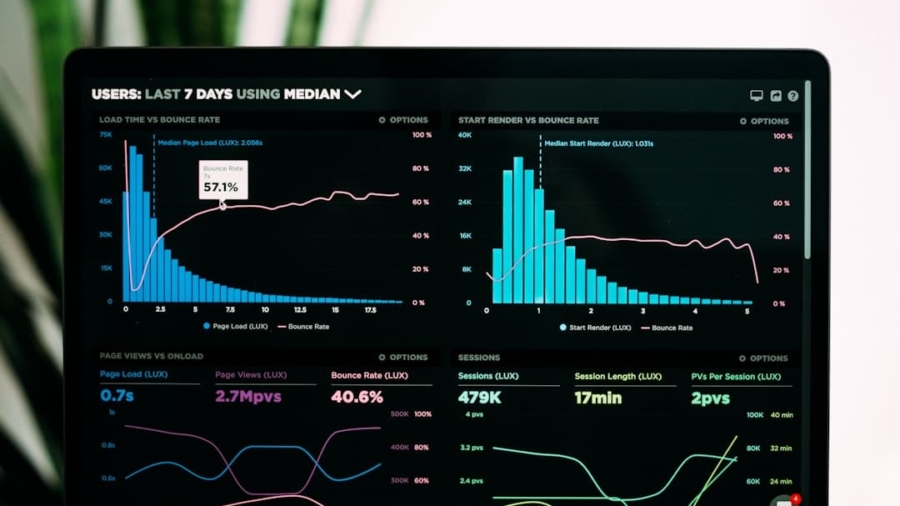The rapid evolution of technology has brought about unprecedented advancements in various fields, including cybersecurity. As organizations increasingly rely on digital infrastructures, the threat landscape has become more complex and sophisticated. Cybercriminals are employing advanced techniques to exploit vulnerabilities, necessitating a proactive approach to threat intelligence and response.
Artificial Intelligence (AI) has emerged as a pivotal tool in this domain, revolutionizing how organizations detect, analyze, and respond to cyber threats. By leveraging machine learning algorithms, natural language processing, and data analytics, AI enhances the capabilities of cybersecurity professionals, enabling them to stay one step ahead of potential attacks. AI’s integration into cyber threat intelligence and response is not merely a trend; it represents a fundamental shift in how organizations approach security.
Traditional methods often rely on manual processes and human expertise, which can be time-consuming and prone to errors. In contrast, AI systems can process vast amounts of data at incredible speeds, identifying patterns and anomalies that may indicate a security breach. This capability allows organizations to respond more swiftly and effectively to threats, minimizing potential damage and ensuring the integrity of their systems.
As cyber threats continue to evolve, the role of AI in cybersecurity will only become more critical.
Key Takeaways
- AI plays a crucial role in enhancing cyber threat intelligence and response by automating processes and analyzing large volumes of data.
- The benefits of AI in cyber threat intelligence include improved accuracy, faster threat detection, and the ability to handle complex and evolving threats.
- AI assists in cyber threat detection by identifying patterns and anomalies in network traffic, behavior, and system activities.
- AI’s impact on cyber threat analysis and prediction enables organizations to proactively identify and mitigate potential threats before they escalate.
- AI streamlines cyber threat response by automating incident response, enabling faster and more effective mitigation of cyber attacks.
The Benefits of AI in Cyber Threat Intelligence
Real-Time Threat Detection
Machine learning models can be trained to recognize patterns associated with known malware or phishing attempts, enabling organizations to detect these threats in real-time. This allows for swift response and mitigation, reducing the risk of a successful attack.
Enhanced Predictive Capabilities
AI enhances the predictive capabilities of threat intelligence by analyzing historical data and identifying trends. This enables AI to forecast potential future attacks and vulnerabilities, allowing organizations to take proactive measures to prevent them.
Proactive Defense
By leveraging AI’s predictive capabilities, organizations can implement preventive measures before an attack occurs. For example, if an AI system identifies a surge in attempted logins from a specific geographic location associated with cybercriminal activity, it can alert security teams to investigate further or implement additional authentication measures. This foresight is invaluable in a landscape where the speed of response can significantly impact the outcome of a cyber incident.
The Role of AI in Cyber Threat Detection
AI plays a crucial role in enhancing cyber threat detection mechanisms. Traditional detection methods often rely on signature-based approaches, which can be ineffective against new or unknown threats. In contrast, AI-driven systems utilize anomaly detection techniques that analyze baseline behavior within a network.
By establishing what constitutes normal activity, these systems can identify deviations that may indicate malicious behavior. For example, if an employee’s account suddenly begins downloading large volumes of sensitive data outside of regular business hours, an AI system can flag this activity for further investigation. Furthermore, AI’s ability to continuously learn from new data allows it to adapt to evolving threats.
As cybercriminals develop more sophisticated tactics, AI systems can update their detection algorithms accordingly. This adaptability is particularly important in combating advanced persistent threats (APTs), which often employ stealthy techniques to infiltrate networks over extended periods. By leveraging machine learning models that evolve with emerging threats, organizations can enhance their detection capabilities and reduce the risk of successful breaches.
AI’s Impact on Cyber Threat Analysis and Prediction
The analytical capabilities of AI extend beyond mere detection; they also play a vital role in understanding the context and implications of cyber threats.
This holistic approach enables analysts to assess the severity of potential threats and prioritize their response efforts effectively.
In addition to analysis, AI’s predictive capabilities are instrumental in anticipating future attacks. By employing predictive analytics, organizations can identify vulnerabilities within their systems before they are exploited by attackers. For instance, if an AI model detects that a particular software version is frequently targeted by cybercriminals, it can recommend timely updates or patches to mitigate the risk.
This forward-thinking approach not only enhances security posture but also fosters a culture of proactive risk management within organizations.
AI’s Role in Streamlining Cyber Threat Response
The integration of AI into cyber threat response processes significantly streamlines incident management and remediation efforts. When a potential threat is detected, AI systems can automate initial response actions based on predefined protocols. For example, if an intrusion detection system identifies suspicious activity on a network segment, an AI-driven response mechanism can automatically isolate the affected system from the network to prevent further compromise.
This rapid response capability minimizes the window of opportunity for attackers and reduces the potential impact on organizational operations. Moreover, AI can assist cybersecurity teams in orchestrating complex response strategies by providing real-time insights and recommendations. During an active incident, AI systems can analyze ongoing events and suggest appropriate countermeasures based on historical data and best practices.
For instance, if a ransomware attack is underway, an AI system might recommend specific containment measures or recovery procedures tailored to the organization’s unique environment. This level of support empowers security teams to make informed decisions quickly, ultimately enhancing their effectiveness in mitigating threats.
Challenges and Limitations of AI in Cyber Threat Intelligence
Despite its numerous advantages, the implementation of AI in cyber threat intelligence is not without challenges. One significant concern is the reliance on high-quality data for training machine learning models. If the data used to train these models is biased or incomplete, it can lead to inaccurate predictions and ineffective threat detection.
Organizations must ensure that they have access to diverse and representative datasets to train their AI systems effectively. Another challenge lies in the interpretability of AI-driven decisions. Many machine learning algorithms operate as “black boxes,” making it difficult for cybersecurity professionals to understand how specific conclusions were reached.
This lack of transparency can hinder trust in automated systems and complicate incident response efforts when human intervention is required. To address this issue, organizations must invest in developing explainable AI models that provide insights into their decision-making processes.
The Future of AI in Cyber Threat Intelligence and Response
Looking ahead, the future of AI in cyber threat intelligence and response appears promising yet complex. As cyber threats continue to evolve in sophistication and scale, organizations will increasingly rely on advanced AI technologies to bolster their defenses. Innovations such as federated learning—where multiple organizations collaborate on training models without sharing sensitive data—could enhance collective threat intelligence while preserving privacy.
Additionally, the integration of AI with other emerging technologies such as blockchain could further strengthen cybersecurity efforts. Blockchain’s decentralized nature could provide secure environments for sharing threat intelligence while ensuring data integrity. As these technologies converge, organizations will have access to more robust tools for combating cyber threats.
Moreover, as regulatory frameworks around data privacy and security evolve, organizations will need to navigate compliance challenges while implementing AI solutions. Striking a balance between leveraging advanced technologies for security and adhering to legal requirements will be crucial for organizations aiming to maintain trust with their customers and stakeholders.
The Importance of Integrating AI into Cybersecurity Strategies
The integration of AI into cybersecurity strategies is no longer optional; it has become essential for organizations seeking to protect themselves against an ever-evolving threat landscape. By harnessing the power of AI for threat intelligence and response, organizations can enhance their detection capabilities, streamline incident management processes, and adopt a proactive approach to risk mitigation. However, it is imperative that organizations remain vigilant about the challenges associated with AI implementation and continuously strive for improvements in data quality and model interpretability.
As we move forward into an increasingly digital future, the collaboration between human expertise and artificial intelligence will be paramount in safeguarding critical assets against cyber threats. Organizations that embrace this synergy will not only enhance their security posture but also foster resilience in the face of emerging challenges in the cybersecurity landscape.
In a recent article on Smartsender: Your Chatbot Platform for Seamless Customer Interactions, the importance of leveraging AI technology for enhancing customer interactions is highlighted. This aligns with the discussion on The Role of AI in Improving Cyber Threat Intelligence and Response, as both articles emphasize the significant impact of AI in various aspects of technology and business operations. By utilizing AI-powered chatbots like Smartsender, organizations can streamline customer interactions and improve overall efficiency, ultimately contributing to a more robust cybersecurity strategy.
FAQs
What is AI?
AI, or artificial intelligence, refers to the simulation of human intelligence processes by machines, especially computer systems. These processes include learning, reasoning, and self-correction.
What is Cyber Threat Intelligence?
Cyber Threat Intelligence (CTI) is information that is collected, processed, and analyzed to understand cyber threats and their potential impact on an organization. This information helps organizations make informed decisions about how to defend against cyber threats.
How does AI improve Cyber Threat Intelligence?
AI can improve Cyber Threat Intelligence by automating the collection and analysis of large amounts of data, identifying patterns and anomalies that may indicate a cyber threat, and providing real-time insights into potential threats.
What role does AI play in Cyber Threat Response?
AI can play a crucial role in Cyber Threat Response by enabling faster and more accurate detection of threats, automating response actions, and helping to prioritize and triage alerts to focus on the most critical threats.
What are some examples of AI technologies used in Cyber Threat Intelligence and Response?
Examples of AI technologies used in Cyber Threat Intelligence and Response include machine learning algorithms for anomaly detection, natural language processing for analyzing unstructured data, and automated response systems for mitigating threats in real-time.
What are the benefits of using AI in Cyber Threat Intelligence and Response?
The benefits of using AI in Cyber Threat Intelligence and Response include improved accuracy and speed in threat detection, the ability to handle large volumes of data more effectively, and the potential to reduce the workload on human analysts, allowing them to focus on more complex tasks.



